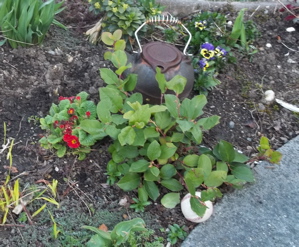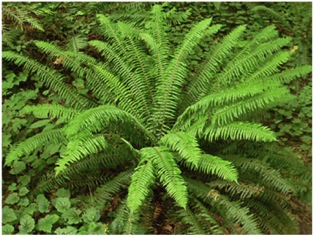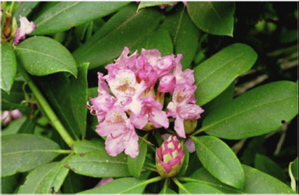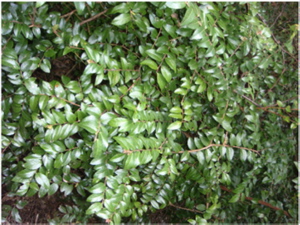West Seattle resident Michelle Gaither won a pollution prevention prize of native plants at  one of the Don’t Feed the Tox-Ick Monster events. To the right is a picture of some of the salal she planted in her front yard.
one of the Don’t Feed the Tox-Ick Monster events. To the right is a picture of some of the salal she planted in her front yard.
Native shrubs are a key tool in combating the Tox-Ick Monster because they help retain stormwater on-site. They are much more effective than lawns at keeping stormwater on-site. In fact, urban designers calculate lawns as 98 – 99% impermeable. Native shrubs are great, especially in combination with organic soils, because microbes in the soil can help break down some of the pollutants found in stormwater, and the plants help the landscape act like a sponge and absorb water.
According to King County’s Native Plant Guide: “The single best ground cover for northwest gardens, salal is a do it all plant. Long recognized as one of the best foliage plants for flower arranging, it is also one of the most adaptable in the native repertoire. It can be grown short, if pruned back, hedged into wave like drifts, allowed to grow rampant and irregular to five feet or more. It will also grow where almost nothing else will, in deep understory forest groves, moist or dry soils, in full sun or deep shade. It does have a harder time in full sun, but if well watered or near the coast, it can survive. It does not transplant well, but it is generally available at garden centers.”
Other good native shrubs (pictures courtesy of Mariposa Naturescapes) to consider planting in your yard include:



